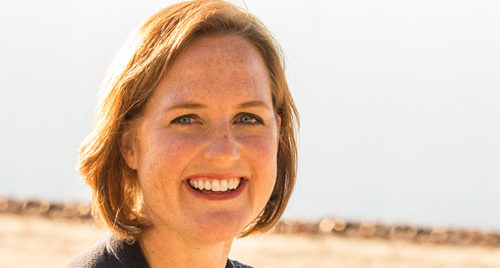Catherine Truman AIA LEED

Job title and company: principal, Catherine Truman Architects
Degree(s): M. Arch, Yale; BA (Art History), Dartmouth College
Professional interests: I love working with existing buildings of almost any sort, figuring out how to make them relevant and practical for contemporary life in terms of use, materials, systems… I love layering the contemporary with the historic. In the larger scale, I think buildings and cities are the manifestations of our culture and priorities—history writ large.
What are you working on now?
We just completed a major renovation of a townhouse in the Back Bay; we restored the historic exterior and transformed the interior into a very modern home (the house had already been significantly altered before we started). We’ve got several projects in construction now; one is a net-zero-energy renovation in Deerfield. It’s a delicate (process) as it includes preserving 18th-century historic material, removing and replacing 1960s interventions, and dismantling and reconstructing an old barn on the property. We’re working on Nantucket, relocating a historic house to a new site to create new living space below, as well as a project in the White Mountains, creating a modern ski house from an existing foundation and working to a tight budget. We’re also working with the nonprofit Esplanade Association to restore the Lotta Fountain and with the Lawrence History Center on exterior renovations to their historic mill buildings.
How do (or how did) you explain to your mom what you do for a living?
My uncle—my mother’s older brother—was an architect and had a small firm in Hamden, Connecticut. He died when I was 13, so I barely knew him, but I think my mom was thrilled when I became an architect, as it was a little bit of him that carried through to the next generation.
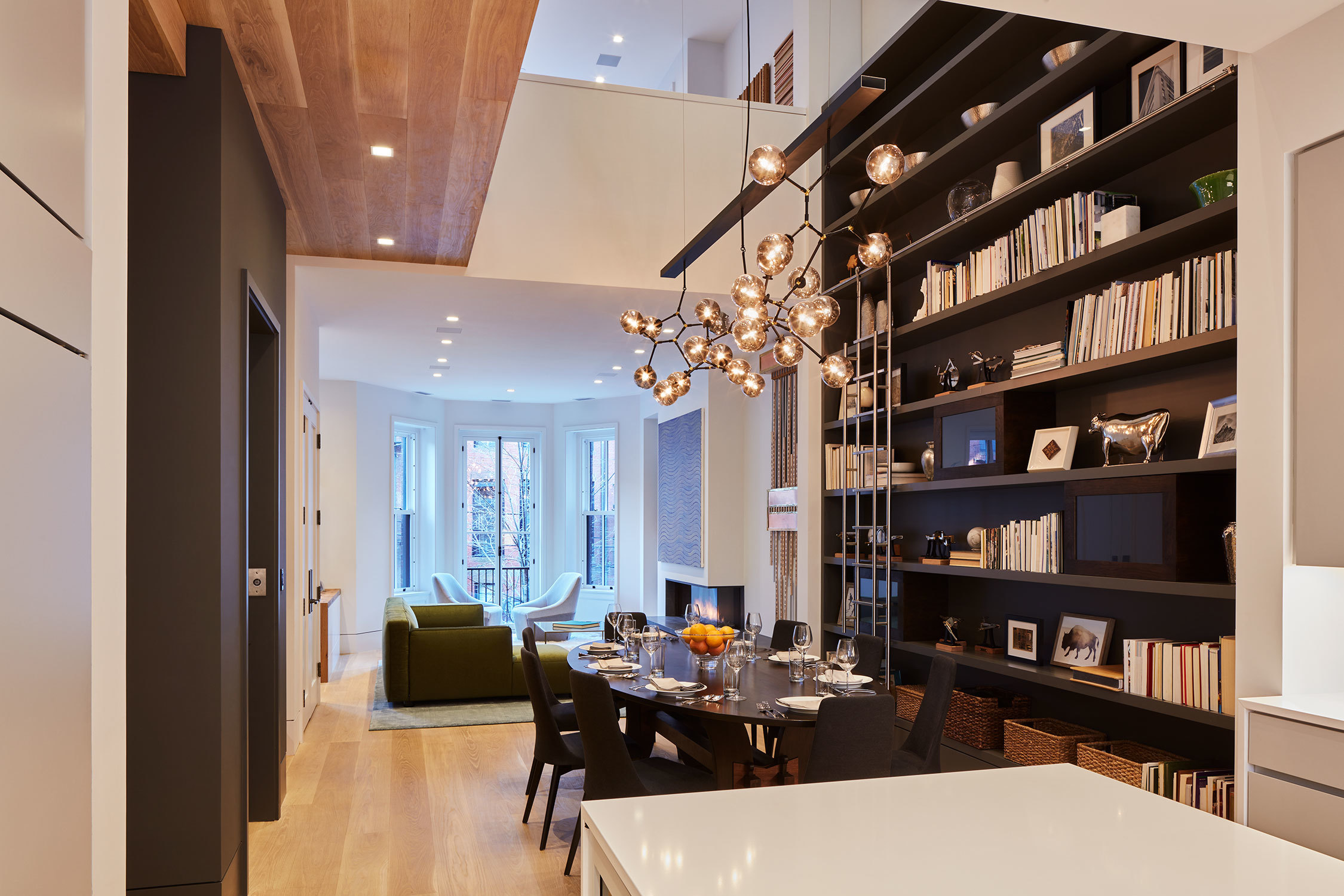
Image: Interior of a recently remodeled Back Bay townhouse, with a two story central space and four story skylight to the roof.
What inspired you today?
Well, it wasn’t today, but last weekend I was hiking in New Hampshire and picked up a leaf and a piece of birch bark off the snow, and they became the concept for the interior palate for the ski house we are doing there.
What architectural buzzword(s) would you kill?
Value Engineering.
When you’re working, do you discuss or exchange ideas with your colleagues?
Absolutely, with my architectural colleagues, engineers, the builder, and—when I’m lucky—with a client. Ultimately, architecture is about problem solving, on a myriad of levels. There’s the “design” part—that’s what we as architects are good at—but there are so many more elements than that. Making it all work seamlessly requires complete collaboration. It’s like a movie: It all has to come together.
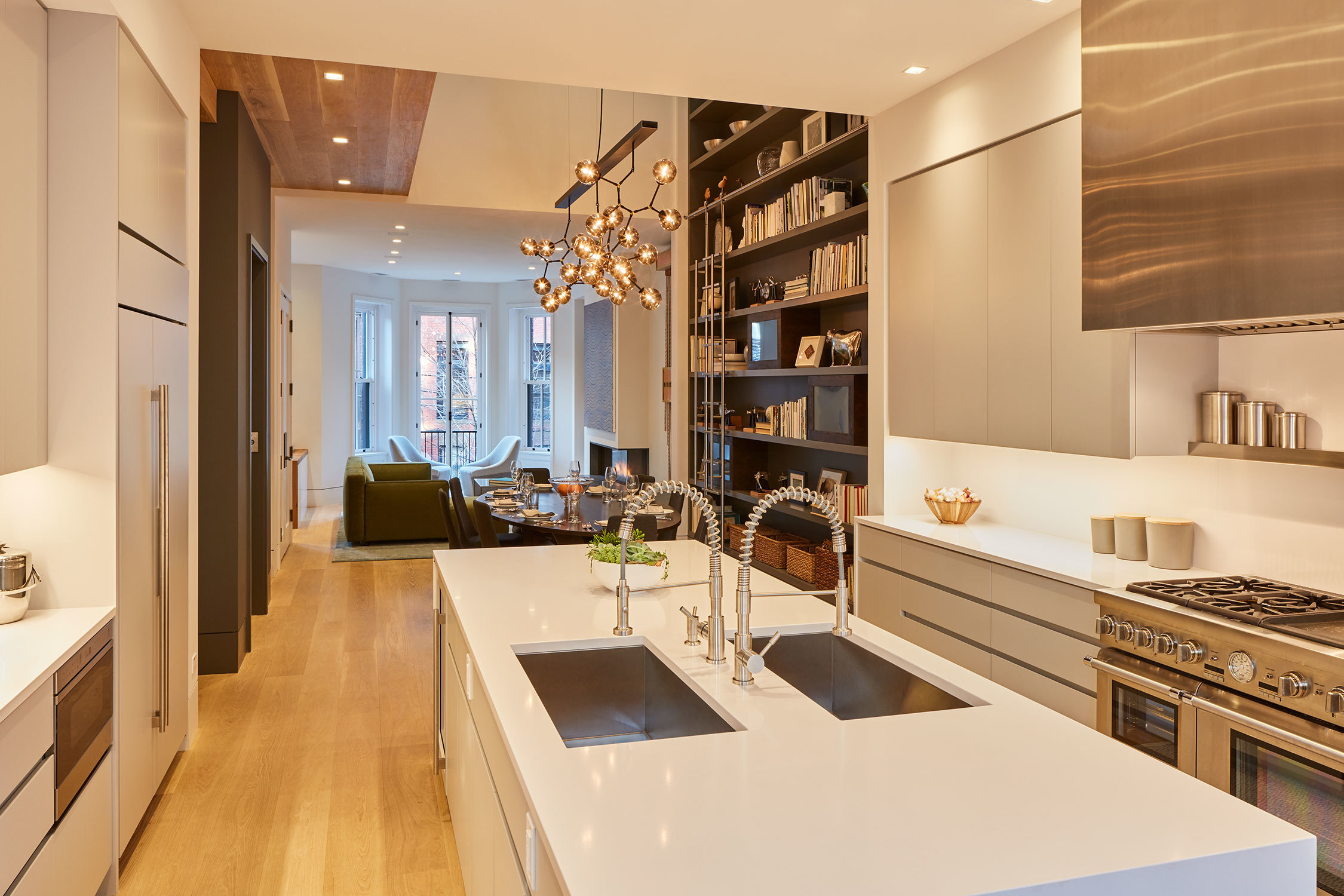
Image: Interior of a recently remodeled Back Bay townhouse, with a two story central space and four story skylight to the roof.
What are you reading?
I’m always half way through an issue of the New Yorker, and in the current political climate, I’ve been reading a lot more journalism than ever before.
Do you sketch by hand or digitally?
Both, though I haven’t yet learned SketchUp, so I go back and forth by hand and CAD, and working with others who are better at 3D modelling than I am. I miss building physical models.
Has your career taken you anywhere you didn’t expect?
Everywhere has been unexpected; that’s what makes it fun. I ended up in Istanbul in grad school, in Alabama after grad school, at Norman Foster’s office in London, in the former Yugoslavia right after the war. None of that was expected. And I never expected I’d run my own shop, but I love it (though I could work out and sleep more, and work less).
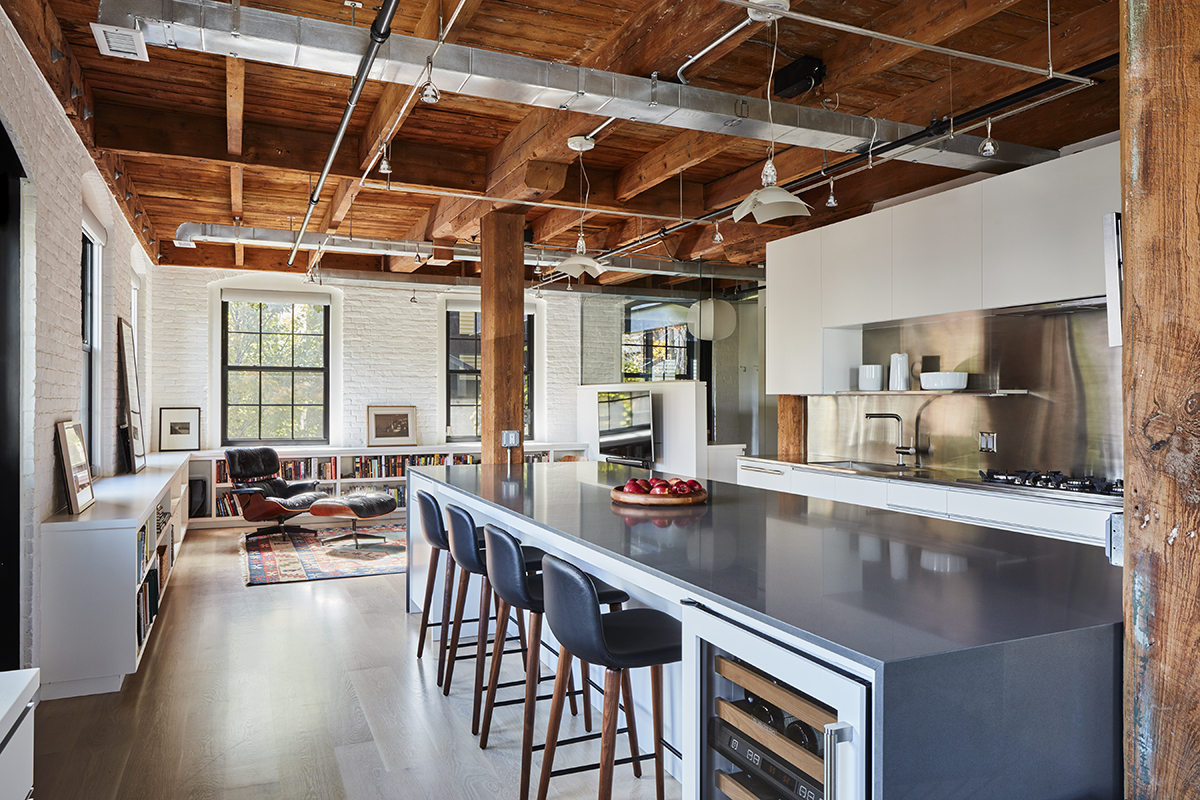
Image: Renovated loft.
Can design save the world?
I’d like to think that educating more people about architecture and design could help improve our built world. With very few exceptions, the one thing we all share is that we all live in a built environment, but few learn much about design, planning, urban or architectural history, in any educational curriculum.
What do you hope to contribute from your work?
On a micro-level, it’s about making each client and project as successful as possible. On a larger level, I hope that many small contributions to our built environment aggregate to form a larger whole. Globally, I would like to return to some of the work I did early in my career, advocating for the preservation of global cultural heritage, though that may wait until we are a little more established.
Who or what deserves credit for your success?
I’ve had a lot of luck, augmented by a lot of hard work, some amazing colleagues, very supportive parents, and some previous employers who believed in me..
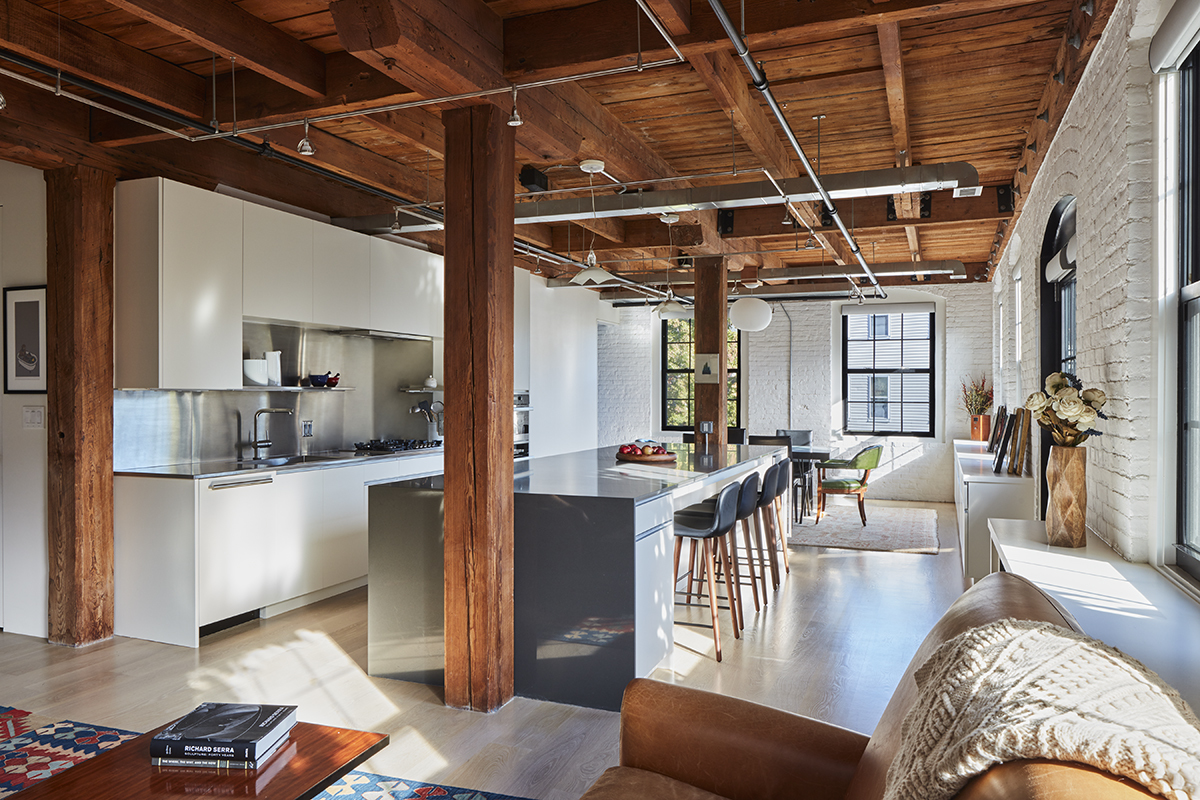
Image: Renovated loft.
Your least favorite college class?
Advanced BC calculus, freshman year, four days a week, 7:45 am. I made it four times the first week, twice before the midterm, and not at all after that. I got a C-, and I don’t know how I did that.
If you could give the you-of-10-years-ago advice, what would it be?
That was 2007… and we all know what it was like in this profession soon after that. I was very lucky during those tough years, but my advice would nonetheless be to be sure you have that rainy day fund, keep your skills and network up to date, and know your value.
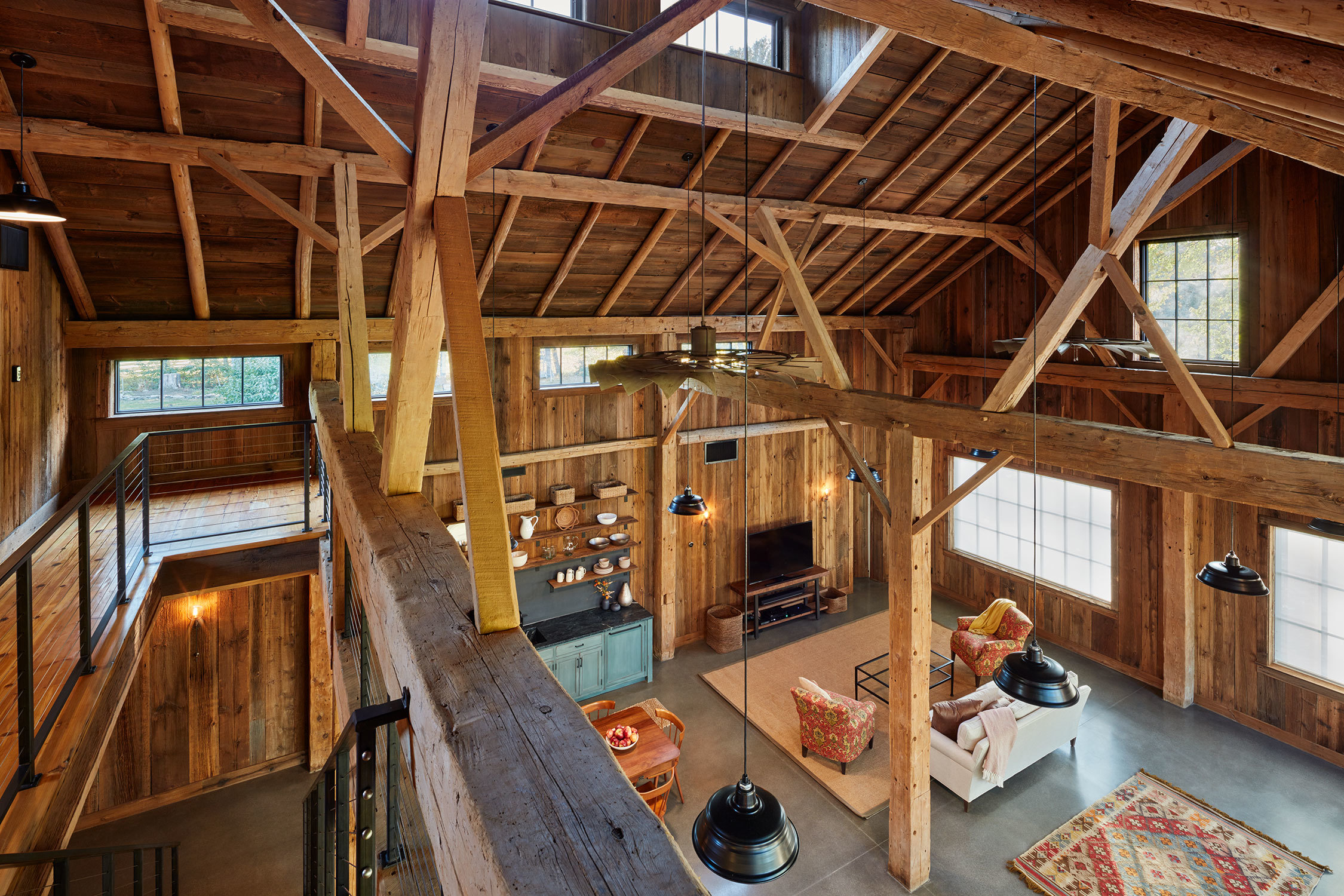
Caption: Restored antique barn.
Your favorite Boston-area structure?
It’s so hard to pick one, especially since, really, Boston itself is a giant urban structure of landfill. I love the Public Garden (not really a structure, but definitely a design), Sanders Hall at Harvard, the Mapparium at the Christian Science center, and the abandoned theater below the Steinway building.
If you could sum up your outlook on life in a bumper sticker, what would it say?
“You miss 100% of the shots you don’t take.” And “Eat more bacon.”
